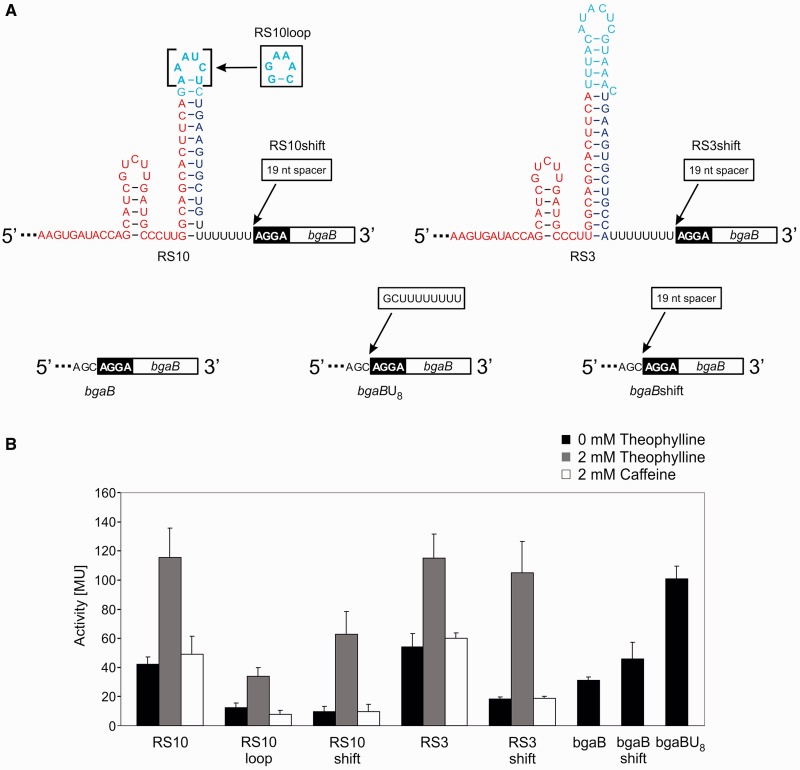Figure 3.
Optimized RS10 and RS3 variants and control constructs. (A) In RS10loop, the tetraloop sequence of the terminator hairpin was adjusted to the frequently found sequence GAAA, including a closing G-C base pair. In RS10shift, a spacer sequence of 19 nt was inserted between the U8 stretch of the terminator and the Shine–Dalgarno sequence (black box). The same 19 nt spacer was inserted in RS3shift at the identical position. In control bgaB, the upstream untranslated region of the reporter gene did not carry any riboswitch or terminator inserts. Furthermore, the U8 stretch alone was placed immediately upstream of the ribosomal binding site, and the 19 nt spacer sequence region was inserted into the original bgaB control construct, leading to bgaBU8 and bgaBshift, respectively. (B) β-galactosidase activity test of the constructs described in (A). Activities are indicated in Miller units (MU). The tetraloop adaptation (RS10loop) in the terminator element led to a reduction of the background activity but lowered also the expression of the reporter gene. Increasing the distance between the riboswitch U8 stretch and the ribosomal binding site of the reporter gene in RS10shift and RS3shift increased the ON/OFF rate substantially, compared with the original constructs (for comparison, the regulation profiles of RS3 and RS10 shown in Figure 2B are indicated in this panel). In the control elements, the U8 stretch immediately upstream of the ribosomal binding site led to a rather high gene expression (bgaBU8), whereas increasing the distance between these sequences reduced the β-galactosidase activity (bgaBshift).

